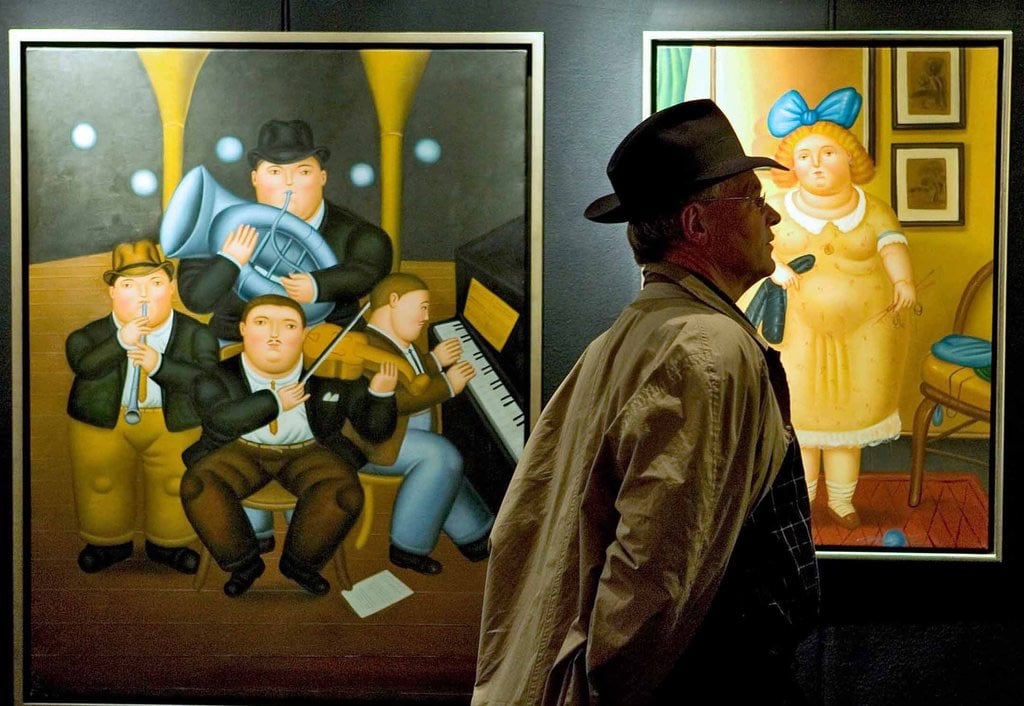For the Atlantic, Bianca Bosker writes about a trove of paintings supposedly by Jean-Michel Basquiat that were discovered in a storage locker, ended up in a museum, and then seized by the FBI as fakes. As the owner of a pretty-convincing-but-probably-fake Basquiat purchased at a Mexico City flea market (that is also painted on cardboard), I read this story with great interest.
Science promises to be a neutral and exacting judge, though in reality forensics aren’t always much help either. Technical analysis can rule out an artwork — pieces from the trove of purported Pollocks with which Mangan was involved were exposed as forgeries after researchers found pigments that postdated the artist’s life — but it can’t rule it in as definitively by the artist in question. Some forgers will submit their handiwork for forensic testing so they can see what flags their pieces as counterfeit, then adjust their methods accordingly. Scientific techniques are also far less useful for contemporary artists like Basquiat, who relied on materials that are still available and for which the margin of error on many tests is wide. When the collector in Norway sent a painting he’d purchased from Barzman to be carbon-dated, the test revealed that the cardboard could be from either the 1950s or the 1990s.
What does it matter if art is authentic?
Our obsession with artworks’ authenticity can in part be traced back to what’s known as the “law of contagion”: Pieces are thought to acquire a special essence when touched by the artist’s hand. Yet the intense distaste for forgeries reveals a dirty secret about our relationship with art, which is that we tend to fixate on genius and authorship more than the aesthetic qualities of the work we claim to value so highly. The writer Arthur Koestler, in an essay on snobbery, goes so far as to argue that when judging a work, who made it should be considered “entirely extraneous to the issue.” What matters more, he argues, is what meets the eye.
When I see art in person or visit historic places, I often think to myself that I am standing where the artist or famous personage once stood — and it makes me feel something. I’m not sure if it has anything to do with magic though.

The Atavist’s “Masterpiece Theater,” by Anna Altman, traces the works of an art forger, Geert Jan Jansen (aka, among others, Jan Van den Bergen). Among other notorious works, Jansen forged a Picasso drawing which was thought to have been destroyed in a robbery, then directed a writer to it so the painting could be rediscovered.
Altman spends a fair amount of time chipping away at Jansen’s motives, and those of art forgers in general:
It takes a certain psychology to exploit art’s loopholes: a tendency toward self-aggrandizement, a loose relationship with the truth, and a sense of superiority, particularly vis-à-vis art royalty. Many forgers take a perverse pleasure in thumbing their noses at gatekeeping elites. And forgers can be something of a Rorschach test for the public. The art world, with its exclusivity, money, and pretension, elicits strong, sometimes negative reactions. The idea of someone skilled enough with a paintbrush or pen to fool the rich and powerful can be tantalizing. “To art critics, the forger is a mediocre artist seeking revenge; to the media, a conman interested only in money; to the apologist, he is the equal of the masters he forged; to the public he is often a folk hero,” Wynne writes.
There’s an element of Catch Me If You Can here:
Inside the château, Schoeller found hundreds of artworks that he and the French police suspected were fraudulent. They were attributed to masters like Picasso, Matisse, and Joan Miró. They were arranged in neat stacks, apparently ready for sale. Fake Chagall paintings hung above the stove, drying. Several rooms were designated for a particular artist whose style was being faked. Authorities also found half-finished works, sketches for new ones, contracts with auction houses in Belgium, Switzerland, and New York, and false authentication certificates. Moreover, Van den Bergen had all the tools required to produce fake certificates of authenticity, including a bag full of stamps and 30 vintage typewriters used to approximate typefaces from various time periods. In a dustbin were strips of paper cut from forged certificates to eliminate watermarks, which might have given away the documentation’s true age.
But the tools of the craft, the seams in the story, might always be more interesting than penetrating whatever depths are in the characters at work:
Strategy, or deciding what kind of art to fake, is also key. Potentially blockbuster works—oil paintings by Michelangelo, say, that might be worth tens of millions of dollars—are likely to be put through the authentication wringer. Less prized items are not. Prints, works on paper, and gouaches (opaque watercolors) usually sell for less than $10,000 and pass through small auction houses and dealers. It’s much easier to elude detection when the stakes, relatively speaking, are low.
That may have been one reason Van den Bergen forged the types of works he did—smaller-scale compositions on paper rather than oil paintings. But he may have had other, more personal motives. Among the paintings recovered from the château were large-format abstract canvases, filled with geometric shapes in shades of lime green and orange. They were originals of the artist, and Schoeller wasn’t impressed. “He’s a perfect craftsman but not an artist,” the investigator told the Stuttgarter Nachrichten. “He has no style of his own.” Perhaps that’s why he’d become a forger in the first place—an abundance of artistic ambition without the vision to realize it.
Remember the whole rare stamp on a Florida absentee ballot thing? Turns out it was a fake. “The give-away signs included an incorrect number of border perforations, the stamp’s thickness and its colour.” (thx, m)






Stay Connected